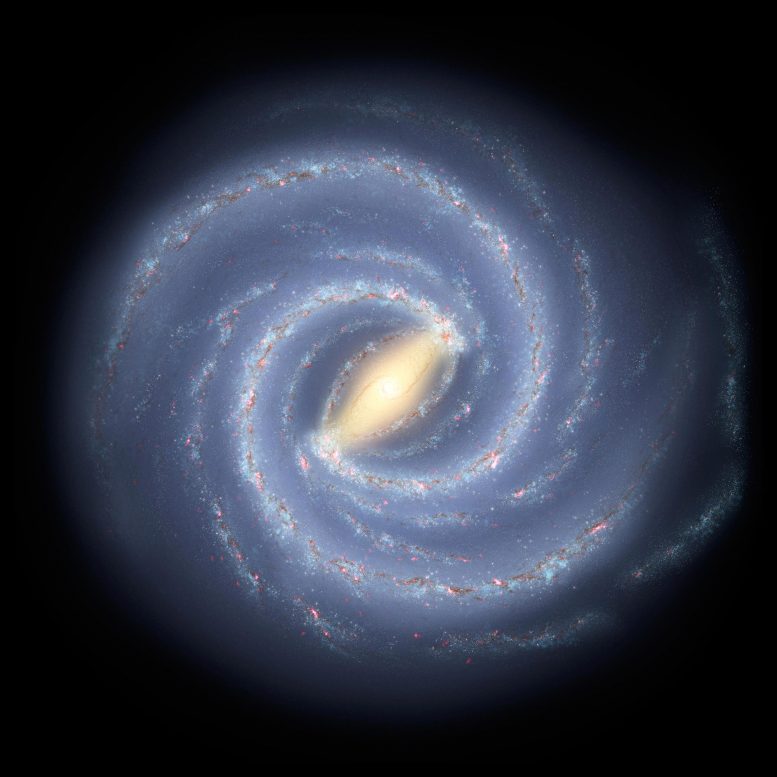The Compton Spectrometer and Imager (COSI) is a soft gamma-ray survey telescope (0.2-5 MeV) designed to probe the origins of Galactic positrons, uncover the sites of nucleosynthesis in the Galaxy, perform pioneering studies of gamma-ray polarization, and find counterparts to multi-messenger sources. COSI’s compact Compton telescope combines improvement in sensitivity, spectral resolution, angular resolution, and sky coverage to facility groundbreaking science. Credit: NASA
NASA has selected a new gamma-ray space telescope, the Compton Spectrometer and Imager (COSI), that will chart the evolution of the Milky Way, seen here in this illustration. Credit: NASA/JPL-Caltech
COSI will study gamma rays from radioactive atoms produced when massive stars exploded to map where chemical elements were formed in the Milky Way. The mission will also probe the mysterious origin of our galaxy’s positrons, also known as antielectrons – subatomic particles that have the same mass as an electron but a positive charge.
COSI’s principal investigator is John Tomsick at the (function(d, s, id){
var js, fjs = d.getElementsByTagName(s)[0];
if (d.getElementById(id)) return;
js = d.createElement(s); js.id = id;
js.src = "https://connect.facebook.net/en_US/sdk.js#xfbml=1&version=v2.6";
fjs.parentNode.insertBefore(js, fjs);
}(document, 'script', 'facebook-jssdk'));
Read original article here
